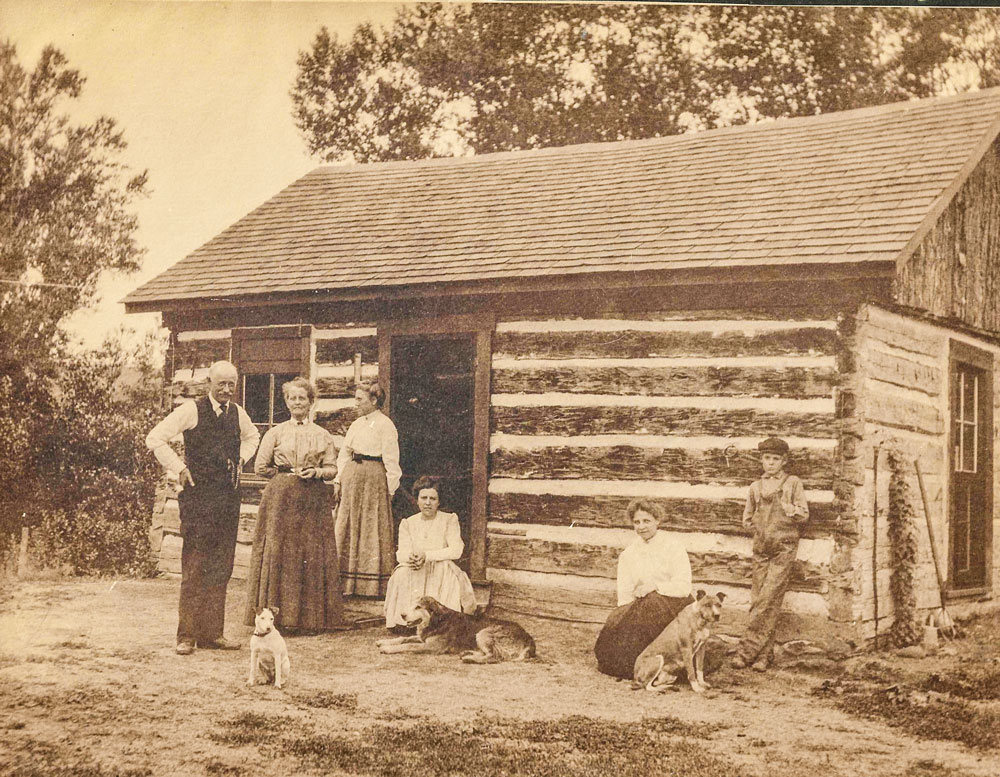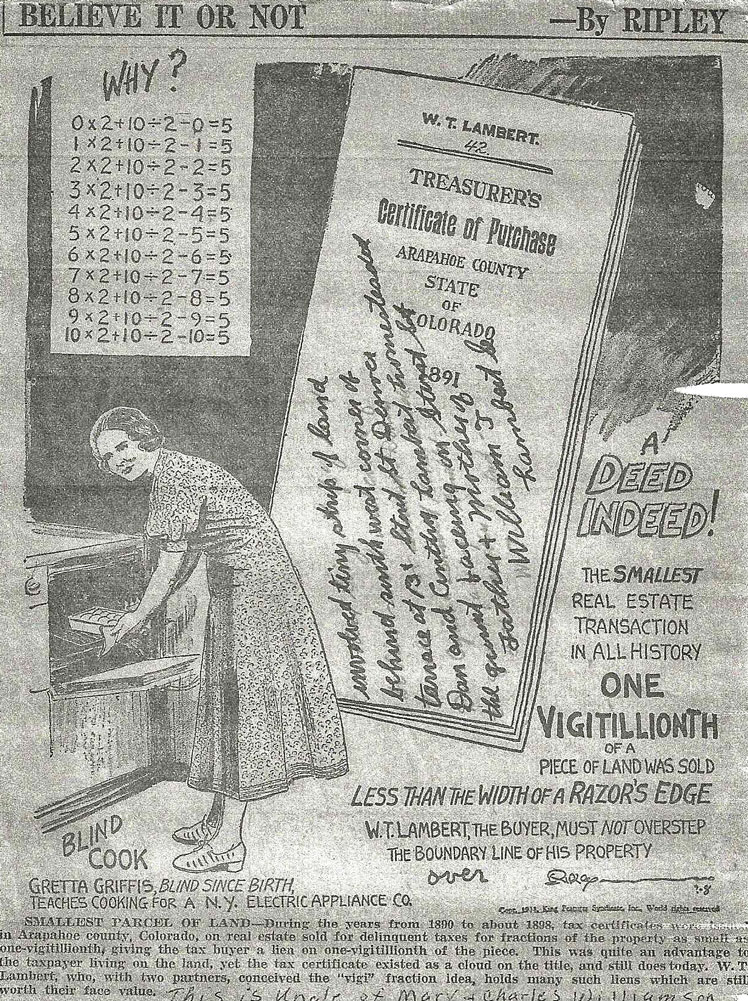From melons to apples: The Lamberts of Indian Creek
By Joe Gschwendtner; courtesy photos

This picture is of William T. Lambert with wife, Rachel, (two leftmost figures) in front of original log home. Photo courtesy of Marjorie Carlson, a descendant of the Parman family.
William Thompson Lambert was born in 1850 to devout Quakers Joseph and Cynthia (Meader) Lambert of Blackstrap, Maine. William was an only child, sickly at that, with bleeding lungs. His frail condition was likely the chief factor in the family’s migration west in 1856 for a drier climate.
Muscatine, Iowa, the state’s melon capital, suited the Lamberts temporarily. Joseph, a stonecutter by trade, had to turn to farming. Still restless after seven years, the family continued west, arriving in Colorado in 1863 on a Baine Conestoga Wagon pulled by oxen. William was 13.
Joseph and his family settled first in Golden. While there, William learned surveying skills. Seeing the locals eventually as a rough crowd, unsuitable for family, Joseph moved them again, bypassing Denver to a broad valley near Wildcat Mountain on Indian Creek in Sedalia. Joseph was permitted to camp there on the land of Greenlief Lowell, another Mainer. (People born in Maine are politely called “Mainers” but, among each other, even “Maineacs” is occasionally used.)
Young William was given full charge of the family oxen while Joseph worked in Denver as a contractor. Apprenticing with his father, William gained basic and valuable engineering experience. At home, he took to farming.
Meanwhile, the Lowell and Lambert families grew closer. In 1874, William married the talented and savvy real estate maven Rachel Parman, Greenlief Lowell’s niece, at the home of Henry Curtis. Five children would soon follow, one that died prematurely.

This is a clipping from the Ripley’s Believe it or Not column that picked up on the cleverness of W.T. Lambert’s tax lien moneymaker.
In 1875, the Lamberts bought 160 acres of Lowell’s land. Rachel’s talent allowed them to capitalize and consolidate land ownership opportunities remaining from the 1862 Homestead Act. Their Indian Creek holdings would grow to 200 head of cattle and 1,640 acres of land.
Besides being a de facto ranch manager, Rachel cooked for the family and 25 ranch hands. Her buttermilk, cottage cheese and milk gravy were legendary. When in Denver for government negotiations, Ute Warrior Chief Colorow was known to drop in, anxious to partake of Rachel’s daily fixin’s.
By 1901, the Lambert family was a major force in the region, William having also done short public service stints as county surveyor and then assessor. Back at the ranch, William crafted an irrigation and reservoir system allowing him to grow fruit, primarily apples and cherries. Dicey though it was with Colorado’s fickle, sine-curve weather, the yield from the Lamberts’ 20,000 fruit trees could be prolific. The summer of 1905 was one of those banner years, and a stone building was constructed for apple processing. Lambert apples and byproducts were famous countywide.
William also had a Denver business office on Tremont Street. With his and Rachel’s real estate savvy, they were opportunists, buying small property tax liens and later profiting from the sale of these distressed properties. Their niche business activities, so unusual, were picked up by the newspapers and then Ripley’s Believe it or Not!
The Lambert family was not without sorrows. The family home burned in 1906. William lost Rachel in 1914, at age 61. William made it to a ripe old age of 90. When interred he joined Rachel again, in Denver’s Fairmount Cemetery.
